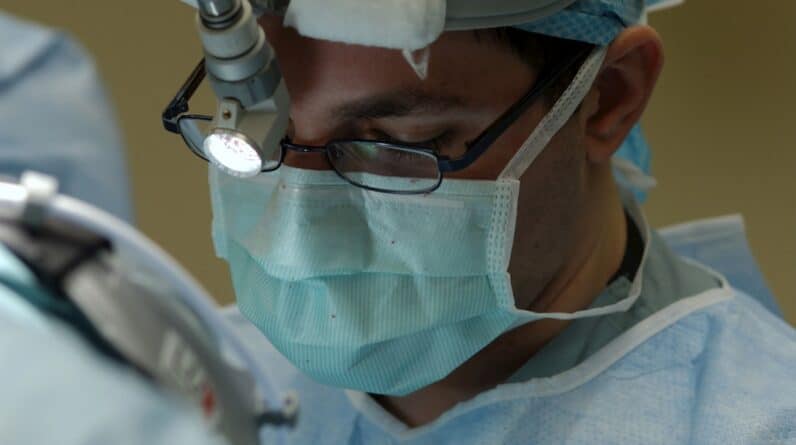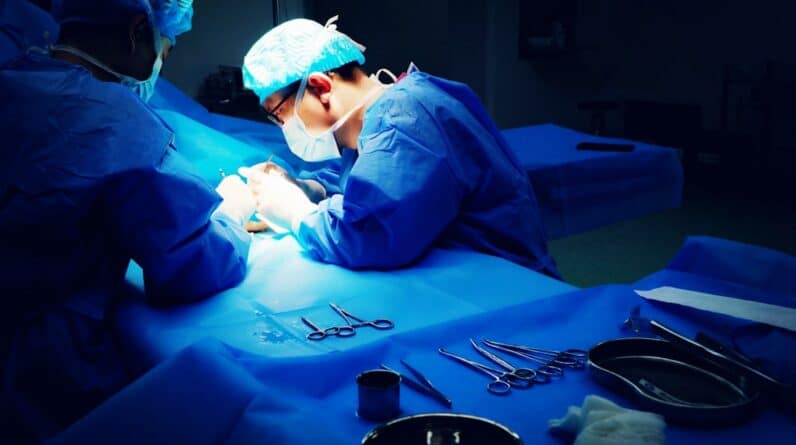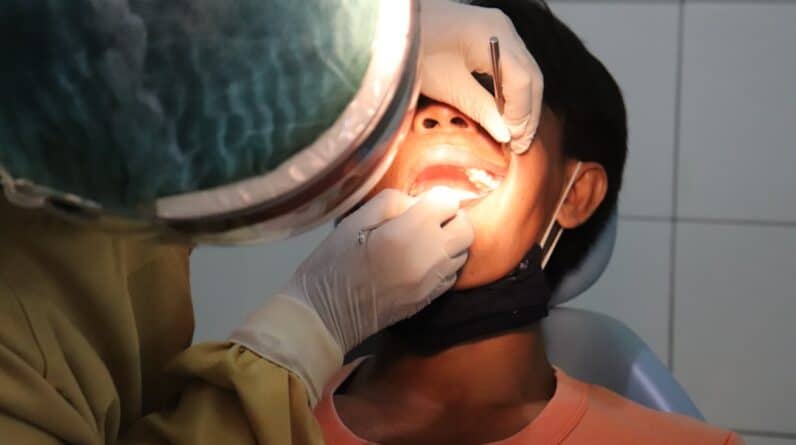Nearsightedness, or myopia, is a common refractive error that affects millions of people worldwide. If you find yourself squinting to read street signs or struggling to see the board in a classroom, you may be experiencing the effects of nearsightedness. This condition occurs when the eyeball is slightly elongated or when the cornea has too much curvature, causing light rays to focus in front of the retina instead of directly on it.
As a result, distant objects appear blurry while close-up vision remains clear. Understanding the underlying causes and symptoms of nearsightedness can help you recognize whether you might need corrective measures. The symptoms of nearsightedness can vary from person to person, but they often include difficulty seeing objects at a distance, frequent headaches from eye strain, and the need to squint to improve clarity.
You may also notice that your vision worsens in low-light conditions or that you experience fatigue after prolonged periods of reading or using digital devices. If you find these symptoms familiar, it may be time to consult an eye care professional for a comprehensive eye exam. Early detection and intervention can significantly improve your quality of life and help you regain clear vision.
Key Takeaways
- Nearsightedness is caused by the elongation of the eyeball or steepening of the cornea, leading to difficulty seeing objects at a distance and potential symptoms such as headaches and eyestrain.
- Lasik surgery offers advantages such as improved vision without the need for glasses or contact lenses, quick recovery time, and minimal discomfort during the procedure.
- When finding a Lasik provider in Frisco, Texas, it is important to consider factors such as the surgeon’s experience, technology used, and patient satisfaction rates.
- Patients preparing for Lasik surgery can expect to undergo a comprehensive eye examination, receive instructions for pre-operative care, and discuss any concerns with their surgeon.
- The Lasik procedure involves creating a thin flap in the cornea, reshaping the underlying tissue with a laser, and repositioning the flap, typically taking only a few minutes per eye.
The Advantages of Lasik Surgery for Nearsightedness
Lasik surgery has emerged as a popular solution for individuals seeking to correct nearsightedness. One of the most significant advantages of this procedure is its ability to provide rapid results. Many patients report improved vision almost immediately after the surgery, allowing them to return to their daily activities without the need for glasses or contact lenses.
This quick recovery time is particularly appealing for those who lead busy lives and cannot afford extended downtime. Another advantage of Lasik surgery is its long-lasting effects. Once the procedure is completed, many patients enjoy clear vision for years, if not decades.
This permanence can lead to significant cost savings over time, as you will no longer need to purchase glasses or contact lenses regularly. Additionally, Lasik can enhance your overall quality of life by freeing you from the hassle of managing corrective eyewear. Imagine waking up in the morning and seeing clearly without fumbling for your glasses or dealing with contact lens solutions—this newfound freedom can be life-changing.
Finding the Right Lasik Provider in Frisco, Texas
When considering Lasik surgery, selecting the right provider is crucial to ensuring a successful outcome. In Frisco, Texas, you have access to a variety of experienced eye care professionals who specialize in refractive surgery. Start by researching local clinics and reading reviews from previous patients.
Look for providers with a strong track record of successful surgeries and satisfied clients. You may also want to ask friends or family members for recommendations based on their experiences. Once you have narrowed down your options, schedule consultations with potential providers.
During these meetings, pay attention to how comfortable you feel with the surgeon and their staff. A good provider will take the time to answer your questions thoroughly and explain the procedure in detail. They should also conduct a comprehensive evaluation of your eyes to determine your candidacy for Lasik surgery.
Trust your instincts—choosing a provider who makes you feel at ease can significantly impact your overall experience.
Preparing for Lasik Surgery: What to Expect
Preparation for Lasik surgery involves several important steps that can help ensure a smooth experience on the day of your procedure. First and foremost, your eye care provider will conduct a thorough examination to assess your eye health and determine if you are a suitable candidate for Lasik. This evaluation may include measuring your corneal thickness, mapping the surface of your eye, and checking for any underlying conditions that could affect the surgery’s success.
In the days leading up to your surgery, you may be advised to avoid wearing contact lenses, as they can alter the shape of your cornea. Instead, opt for glasses during this period. Additionally, it’s essential to discuss any medications you are taking with your provider, as some may need to be adjusted or temporarily discontinued before the procedure.
On the day of your surgery, make sure to arrange for someone to drive you home afterward, as your vision may be temporarily impaired.
The Lasik Procedure: Step by Step
On the day of your Lasik surgery, you will arrive at the clinic and be greeted by the staff who will guide you through the process. After checking in, you will be taken to a pre-operative area where your eyes will be prepared for the procedure. This preparation typically involves administering numbing eye drops to ensure your comfort throughout the surgery.
Once you’re ready, the surgeon will use a specialized device to create a thin flap in the cornea. This flap is gently lifted to expose the underlying tissue, allowing the surgeon to reshape it using a laser. The laser precisely removes microscopic amounts of corneal tissue, correcting the refractive error that causes nearsightedness.
After reshaping is complete, the flap is carefully repositioned over the treated area, where it will naturally adhere without stitches. The entire procedure usually takes less than 30 minutes per eye, and many patients report feeling minimal discomfort during this time.
Post-Operative Care and Recovery
After your Lasik surgery, proper post-operative care is essential for ensuring optimal healing and visual outcomes. Your eye care provider will give you specific instructions on how to care for your eyes in the days following the procedure. This may include using prescribed eye drops to prevent infection and reduce inflammation, as well as avoiding activities that could strain your eyes.
In the initial days after surgery, it’s common to experience some fluctuations in vision as your eyes heal. You may notice glare or halos around lights, particularly at night; however, these symptoms typically subside within a few weeks. It’s crucial to attend all follow-up appointments with your provider so they can monitor your recovery progress and address any concerns you may have.
Potential Risks and Complications of Lasik Surgery
While Lasik surgery is generally considered safe and effective, like any medical procedure, it carries some risks and potential complications. It’s important to have an open discussion with your eye care provider about these risks before undergoing surgery. Some patients may experience dry eyes after the procedure, which can be uncomfortable but usually resolves over time with proper management.
Other potential complications include undercorrection or overcorrection of vision, which may necessitate additional procedures or corrective eyewear. In rare cases, patients may experience more severe issues such as infection or scarring of the cornea. Understanding these risks can help you make an informed decision about whether Lasik surgery is right for you.
Determining Candidacy for Lasik Surgery
Not everyone is a suitable candidate for Lasik surgery; therefore, determining candidacy is a critical step in the process. Your eye care provider will evaluate several factors during your initial consultation to assess whether you qualify for the procedure. Key considerations include your age, overall eye health, and the stability of your prescription over time.
Typically, candidates should be at least 18 years old and have had a stable prescription for at least one year prior to surgery. Additionally, certain medical conditions such as autoimmune diseases or uncontrolled diabetes may disqualify you from being a candidate for Lasik. By undergoing a thorough evaluation with an experienced provider, you can gain clarity on whether this life-changing procedure is right for you.
The Cost of Lasik Surgery in Frisco, Texas
The cost of Lasik surgery can vary significantly based on several factors, including the technology used during the procedure and the experience of the surgeon performing it. In Frisco, Texas, prices typically range from $2,000 to $3,500 per eye. While this may seem like a substantial investment upfront, many patients find that the long-term savings on glasses and contact lenses make it worthwhile.
It’s also important to consider financing options that may be available through your chosen provider or third-party lenders. Many clinics offer payment plans that allow you to spread out the cost over time, making it more manageable within your budget. Additionally, some insurance plans may cover part of the cost if deemed medically necessary; therefore, it’s worth checking with your insurance provider before making a decision.
Real Patient Experiences: Testimonials and Success Stories
Hearing from real patients who have undergone Lasik surgery can provide valuable insight into what you can expect from the experience. Many individuals share stories of how their lives have changed dramatically after achieving clear vision without glasses or contacts. For instance, one patient recounted how they were able to participate in outdoor activities like hiking and swimming without worrying about their eyewear getting damaged or lost.
Another common theme among testimonials is the newfound confidence that comes with improved vision. Many patients express feelings of liberation from their previous reliance on corrective lenses and describe how they can now engage more fully in both personal and professional aspects of their lives. These success stories serve as powerful reminders of how transformative Lasik surgery can be for those struggling with nearsightedness.
Long-Term Results and Maintenance After Lasik Surgery
After undergoing Lasik surgery, many patients enjoy long-lasting results that significantly improve their quality of life. However, it’s essential to understand that individual experiences may vary based on factors such as age and overall eye health. While most people achieve 20/25 vision or better after surgery, some may require enhancements or additional procedures down the line.
To maintain optimal vision after Lasik surgery, regular eye exams are crucial for monitoring any changes in your eyesight over time. Your eye care provider will guide you on how often you should schedule these check-ups based on your unique circumstances. By staying proactive about your eye health and following post-operative care instructions diligently, you can maximize the benefits of Lasik surgery and enjoy clear vision for years to come.
In conclusion, understanding nearsightedness and exploring options like Lasik surgery can empower you to take control of your vision health. With careful consideration and preparation, you can embark on a journey toward clearer sight and enhanced quality of life.
FAQs
What is Lasik for Nearsightedness?
Lasik, which stands for Laser-Assisted In Situ Keratomileusis, is a surgical procedure that uses a laser to reshape the cornea of the eye in order to improve vision. It is commonly used to correct nearsightedness, farsightedness, and astigmatism.
How does Lasik for Nearsightedness work?
During the Lasik procedure, a thin flap is created on the surface of the cornea. The surgeon then uses a laser to remove a small amount of corneal tissue, which reshapes the cornea and corrects the refractive error causing nearsightedness. The flap is then repositioned, and the eye is left to heal naturally.
Is Lasik for Nearsightedness safe?
Lasik is considered a safe and effective procedure for the correction of nearsightedness. However, as with any surgical procedure, there are potential risks and complications. It is important to consult with a qualified ophthalmologist to determine if Lasik is the right option for you.
What are the benefits of Lasik for Nearsightedness?
The main benefit of Lasik for nearsightedness is the significant improvement in vision that it can provide. Many patients experience reduced dependence on glasses or contact lenses after undergoing the procedure. Lasik also offers a quick recovery time and minimal discomfort.
Where can I find Lasik for Nearsightedness in Frisco, Texas?
There are several ophthalmology clinics and eye care centers in Frisco, Texas that offer Lasik for nearsightedness. It is important to research and choose a reputable and experienced surgeon for the procedure. Consulting with a local ophthalmologist is the best way to find a qualified provider in the area.






